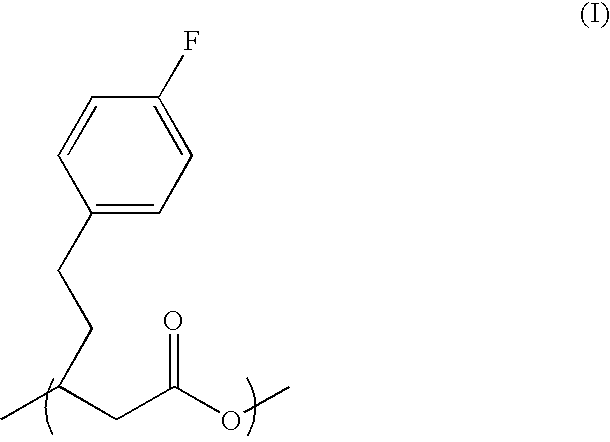Polyhydroxyalkanoate synthase and gene encoding the same enzyme
a technology of polyhydroxyalkanoate and enzyme, applied in the field of polyhydroxyalkanoate, can solve the problems of difficult production of phas comprising different monomer units suitable for a variety
- Summary
- Abstract
- Description
- Claims
- Application Information
AI Technical Summary
Benefits of technology
Problems solved by technology
Method used
Image
Examples
example 1
Cloning of a PHA Synthase Gene of YN2 Strain
[0097]YN2 strain was cultured in 100 mL of LB medium (1% polypeptone, 0.5% yeast extract, 0.5% sodium chloride, pH 7.4) at 30° C. overnight and then a chromosome DNA was separated and collected as described by Marmer. The obtained chromosome DNA was completely digested using a restriction enzyme BglII. A vector pUC18 was cleaved with a restriction enzyme BamHI. After dephosphorylation of the terminals (Molecular Cloning, Vol. 1, p. 5.7.2 (1989), Cold Spring Harbor Laboratory), the cleaved site of the vector (cloning site) and the chromosome DNA fragment after BglII complete digestion were ligated using a DNA ligation kit Ver. II (Takara Shuzo Co., Ltd.). The plasmid vector in which the chromosome DNA fragment was integrated was used to transform Escherichia coli HB101 for preparing a chromosome DNA library for YN2 strain.
[0098]Then, in order to select a DNA fragment comprising a PHA synthase gene of YN2 strain, a probe for colony hybridiza...
example 2
Recombination of a PHA Synthase Gene of YN2 Strain to an Expression Vector
[0101]A PHA synthase gene having the sequence of SEQ ID NO: 2 was PCRed using a chromosome DNA as a template to reproduce the whole length of a PHA synthase gene. An oligonucleotide having a sequence which was an upstream primer to the sequence of SEQ ID NO: 2 and had a sequence upstream of its initiation codon (SEQ ID NO: 7) and an oligonucleotide having a sequence which was a downstream primer to the sequence of SEQ ID NO: 2 and had a sequence downstream of its termination codon (SEQ ID NO: 8) were designed and prepared (Amersham-Pharmacia Biotech). Using these oligonucleotides as a primer, PCR was conducted to amplify the whole length of the PHA synthase gene (LA-PCR kit; Takara Shuzo Co., Ltd.).
[0102]Likewise, a PHA synthase gene having the sequence of SEQ ID NO: 4 was PCRed using a chromosome DNA as a template to reproduce the whole length of a PHA synthase gene. An oligonucleotide having a sequence which...
example 3
PHA Production (1) Using a PHA Synthase Gene Recombinant E. Coli
[0105]Using the recombinant plasmids obtained in Example 2, pYN2-C1 (derived from SEQ ID NO: 2) and pYN2—C2 (derived from SEQ ID NO: 4), an Escherichia coli HB101fB (fadB deficient strain) was transformed by a calcium chloride method to prepare recombinant E. coli strains retaining the recombinant plasmid, pYN2-C1 and pYN2-C2 recombinant strains, respectively.
[0106]Each of the pYN2-C1 and pYN2-C2 recombinant strains was inoculated to 200 mL of M9 medium containing 0.5% yeast extract and 0.1% FPVA, and the medium was shaken at 37° C. with a rate of 125 strokes / min. After 24 hours, the cells were collected by centrifugation, washed once with cold methanol and lyophilized.
[0107]The lyophilized pellet was suspended in 100 mL of chloroform and the suspension was stirred at 60° C. for 20 hours to extract a PHA. After filtering the extract through a membrane filter with a pore size of 0.45 μm, the filtrate was concentrated by...
PUM
| Property | Measurement | Unit |
|---|---|---|
| temperature | aaaaa | aaaaa |
| pH | aaaaa | aaaaa |
| pore size | aaaaa | aaaaa |
Abstract
Description
Claims
Application Information
 Login to View More
Login to View More - R&D
- Intellectual Property
- Life Sciences
- Materials
- Tech Scout
- Unparalleled Data Quality
- Higher Quality Content
- 60% Fewer Hallucinations
Browse by: Latest US Patents, China's latest patents, Technical Efficacy Thesaurus, Application Domain, Technology Topic, Popular Technical Reports.
© 2025 PatSnap. All rights reserved.Legal|Privacy policy|Modern Slavery Act Transparency Statement|Sitemap|About US| Contact US: help@patsnap.com



